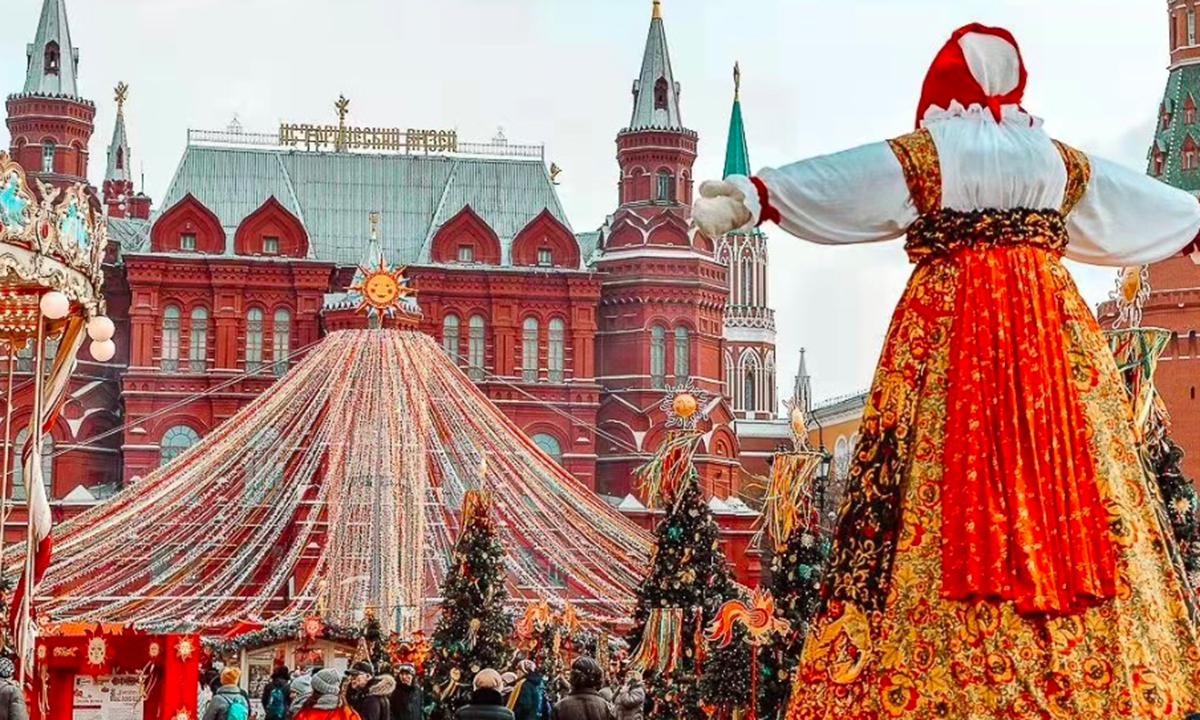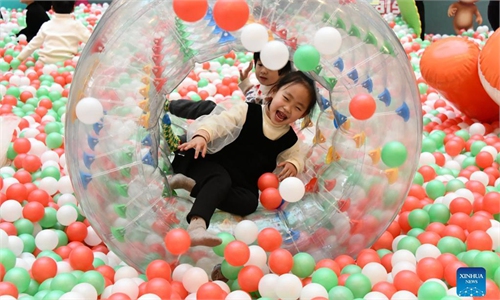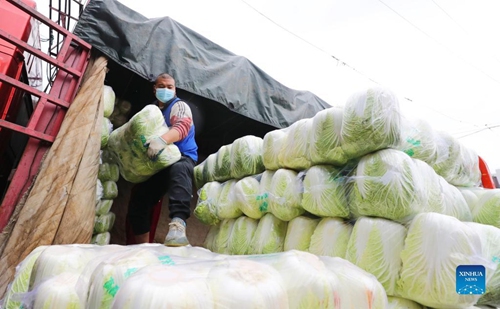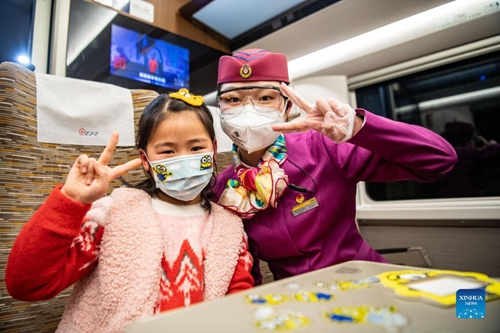
People celebrating the festival called Maslenitsa in springtime in Russia Photo:Sina Weibo
Editor's Note:Like China, many other countries see spring's coming as a sign of blessing and happiness. Countries like China and South Korea share similar cultural traditions in greeting the spring, and some other countries like Russia have also embraced their own customs to mark the New Year's season of vitality.
Russia
In Russia, people celebrate the festival that called Maslenitsa in springtime. It is scheduled one week before the season of Lent, which is the fasting season in the Russian Orthodox Church calendar. During the week, people can enjoy meat and dairy products in abundance. The festival is celebrated at the end of February and early March each year. People will bake round pancakes into golden yellow to appreciate the sun, and in the dark night, people will light a bonfire for celebrations.
Previously, the festival was celebrated as the ancient Slavs' biggest spring holiday. People believed that the passing of winter and coming of spring was brought by Yarilo, the "god of springtime" that conquered cold and dark nights.
South Korea
Similar to Chinese culture, in South Korea, people greet the spring season by paying a lot of attention to prepare a feast. Tteokguk, a soup dish with sliced rice cakes is an iconic food served at the New Year dining table in South Korea. Ancient Koreans worshipped the sun. The white sliced rice cake represents it for "'blessing."' The round rice cake slices also look like coins, and many people eat them in the hope of becoming wealthy in the New Year.
Unlike the Chinese New Year dinner tradition, in South Korea, the feast is organized on the first day of New Year. Besides Tteokguk, other foods such as the mixed-rice pudding and meat slices will also be served for the New Year table.
Vietnam
Vietnam's cultural tradition of celebrating the spring is deeply influenced by Chinese culture. They too believe the Spring Festival is an auspicious time to leave the old and welcome the new. People in Vietnam start to prepare goods for the New Year from mid-December, and they will use a lot of flowers for decorations, and prepare rice dumplings and firecrackers.
Vietnamese rice dumplings are very similar to the Chinese ones. They are a classic Spring Festival dish for many families and are usually made of pork meat, mung bean paste and wrapped in banana leaf. It is said that rice dumplings symbolize the earth, green shows vitality, and the stuffing in the middle represents prosperity.
India
India celebrates the spring season with a traditional Hindu festival called Holi, also known as the "Festival of Spring." Originated in the old times in hopes of a successful harvest, it is held from February to March every year. Dancing and singing are how Indian people celebrate spring at the gala. The ritual is "colourful," and people will paint their faces and bodies, and also will throw coloured pigments and powders on others to show their blessings.
The festival is now becoming an event for people to release resentments, and to welcome the New Year ahead with happiness.
The UK
During Spring Festival, The Chinatown in London, the UK, has become many local people's choice to visit, including royal family members like Prince Charles. There are Spring Festival decorations such as the red lantern, and also classic dragon and lion dance performances. The "get-together" culture is important for people in the UK to celebrate the spring season. The festival of "Ostara" is held every year on March 20 at Stonehenge, a prehistoric monument in England. People will gather together in the early morning to watch as the sun rises over the ring of stones to bless a wonderful New Year.
The US
In the US, there is a special "socks-burning" event held in Annapolis, the capital of Maryland, the US to celebrate the spring's coming. The tradition of burning socks began in the 20th century, and the Spring Festival ceremony is linked to the local sailing culture. People burn socks there to symbolize that they can wear shoes barefoot when the weather warms up. It is a hope to have the winter ended soon and the spring comes early. Similar to the Chinese tradition, people in the US will also do the spring cleaning as an annual tradition to shake away the winter's decaying vibe in the hope to receive new lucks.
Croatia
The annual Rijeka Carnival, Europe's largest Carnival festival is held every year in Rijeka, Croatia to celebrate the spring season. During the carnival, the most eye-catching event is the performance of the Halubian bellmen, which is also called Zvončari in Croatian. The performance is related to a longstanding folk custom. In the carnival season, the bell ringers will dress in flamboyant clothes, and ring bells extremely loud in the hope to scare away evil spirits, and to awake new lucky ones in the springtime.



